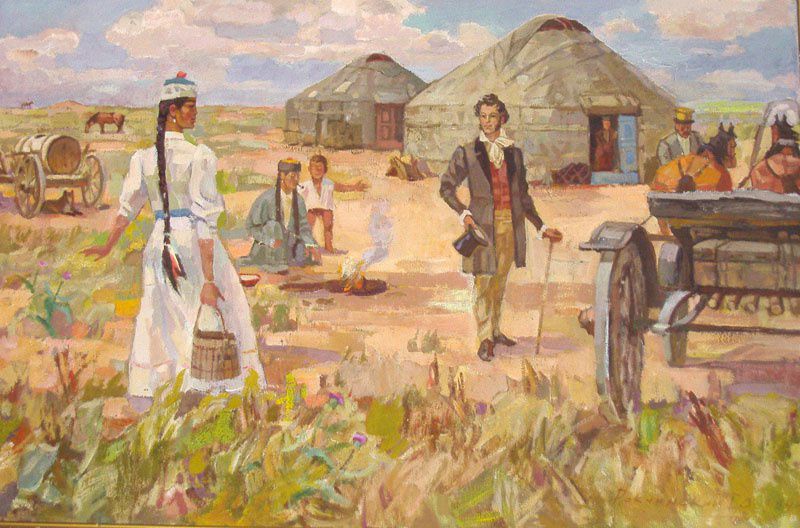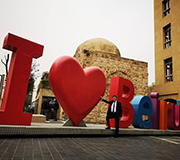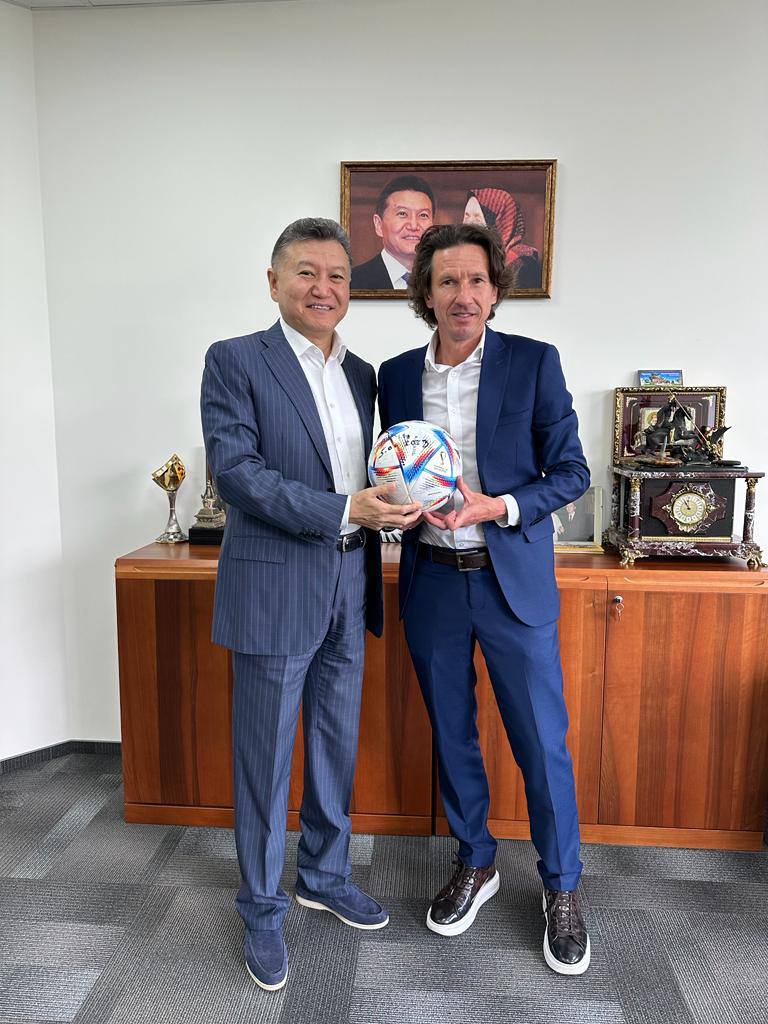In the years of struggle with religion in the USSR, only Buddhism was completely eliminated. Datsans and khuruls were closed and destroyed. In Buryatia, with the permission of Stalin, Ivolginsky Datsan was opened only in 1946. Kalmykia at that time no longer existed as a republic after the deportation of Kalmyks. Each Kalmyk family tried to take burkhans and sacred books with them. They said that when Kalmyks, who died on the way, were thrown out of the carriages, Buddhist thangkas were found on their bodies.
To save the sacred images, Kalmyks wrapped them around their bodies. But it was almost impossible to save all the relics in exile. When the Kalmyks returned to their lands in 1957, the only surviving Khosheut Khurul, erected in honour of the victory in the war of 1812, was not included in the boundaries of the Kalmyk ASSR. Now this ancient temple is still on the Astrakhan region’s territory.
During ‘the years of stagnation’, only few people could go to pray at the only then Buddhist monastery in distant Buryatia. Nevertheless, the lamas, who survived after the exile, attempted to revive the faith with the help of the Ivolginsky Datsan.
The first after the October Revolution khurul, Sakusn-Sume, was built with donations from residents of the republic and with personal savings of Kirsan Ilyumzhinov. In free translation, its name means "Holy monastery of enlightened monks". This name was granted by His Holiness the 14th Dalai Lama in advance, before the construction of the temple, in 1992. Khurul Sakusn-Sume was inaugurated on 5 October, 1996.
The huge snow-white 56-meter-high temple The Golden Abode of Shakyamuni Buddha was erected in just nine months. Its construction was blessed by the 14th Dalai Lama. This temple is known as the biggest in Europe, It has the largest statue of Buddha (9 meters) and the only sculpture in the world of 17 scholars – pandits of the ancient Nalanda University in India.
Built in 2005 with the blessing of His Holiness the 14th Dalai-Lama with the money of the first President of Kalmykia Kirsan Ilyumzhinov and donations from local residents, the temple became the hallmark of Elista, the capital of this steppe region. They say it is almost impossible to see the top of the khurul - it shines so much with the sun’s reflected light.
A nine-meter golden Buddha statue (the largest in Europe) is in the centre of the main hall. Real treasures for any Buddhist - sacred relics, mantras, incense, as well as a handful of earth from all parts of the republic - are hidden inside the statue.
I already wrote in my last article about how Elista’s Buddhism favourably differs from that in Ulan-Ude. The main Datsan of Kalmykia, which is called Khurul, rises nearly in the centre of the city and is visible from afar. At the entrance to the fenced area of Khurul, you would be surprised to see how perfectly it is being looked after. In October, fragrant roses are blooming beside the flowering trees.
The innovative idea to put the statues of Nalanda’s scholars around the largest Buddhist temple in Europe belongs to the 14th Dalai Lama. Elista khurul is unique in its combination of antiquity and modernity. Indeed, we stood for a long time in front of the statues of ancient philosophers to read their life stories and contributions to Buddhist philosophy. After such a reading , we bowed down in awe before great thinkers. These people created the Mahayana teachings - the “big chariot” for salvation of humanity.
We go inside the temple. Instead of thangkas, there are pictures of fourteen incarnations of the Dalai Lama hung on the walls of the main hall. Tibetan artists who came from India painted the walls in the temple. After prayers, it would be a sin not to make a prostration in front of Burhan Bakhsh. Then we waited in the basement of the temple, where the museum and library are located. To my amazement, from there we took the elevator to the third and fourth floors of the temple. There is a spacious conference room where lectures and seminars are held. In the chambers, they receive lamas.
The residence of His Holiness Dalai Lama is on the fifth floor.
After visiting a Buddhist temple in Elista and getting to know Kalmyks, I want to share my first impressions. I was greatly impressed by the number of Kalmyks that live in the neighbourhood of the Caucasus – 170 thousand. On the other hand, Kalmyks are the neighbours of Astrakhan, Rostov, Volgograd and Stavropol regions.
For 400 years of living there, our Kalmyk brothers absorbed a part of the culture and traditions of the neighbouring peoples. To some Buryats, the male Kalmyk costume resembles the Circassian one and the Sharka Barka folk dance looks like lezginka in the Kalmyk version.
Looking back at the history of Kalmyks, you understand that, in comparison with them, Buryats lived in more comfortable conditions, close to the state that shared similar language and religion with them. We did not leave our historical homeland for such a long time; neither served as a human shield from Turkey nor were deported... Therefore, we must learn the strength of spirit from Kalmyks.
 A journalist from Buryatia continues his fascinating story about his trip to the capital of Kalmykia, Elista, and how Buddhism helped and helps Kalmyks to be one people. The Inform Policy’s reporter visited the largest Buddhist temple in Europe. We invite the readers of our website to make a fascinating journey through Elista with him.
A journalist from Buryatia continues his fascinating story about his trip to the capital of Kalmykia, Elista, and how Buddhism helped and helps Kalmyks to be one people. The Inform Policy’s reporter visited the largest Buddhist temple in Europe. We invite the readers of our website to make a fascinating journey through Elista with him.
Despite the closeness of the language, traditions and culture, Kalmyks are more united as a people than Buryats. It is not because of differences in their history. It is by the example of Kalmyks that Buryats know the truth of the saying ‘one religion, one people’. And that helps them to dispel erroneous stereotypes such as Buddhism made the Mongolian peoples weak in spirit.























